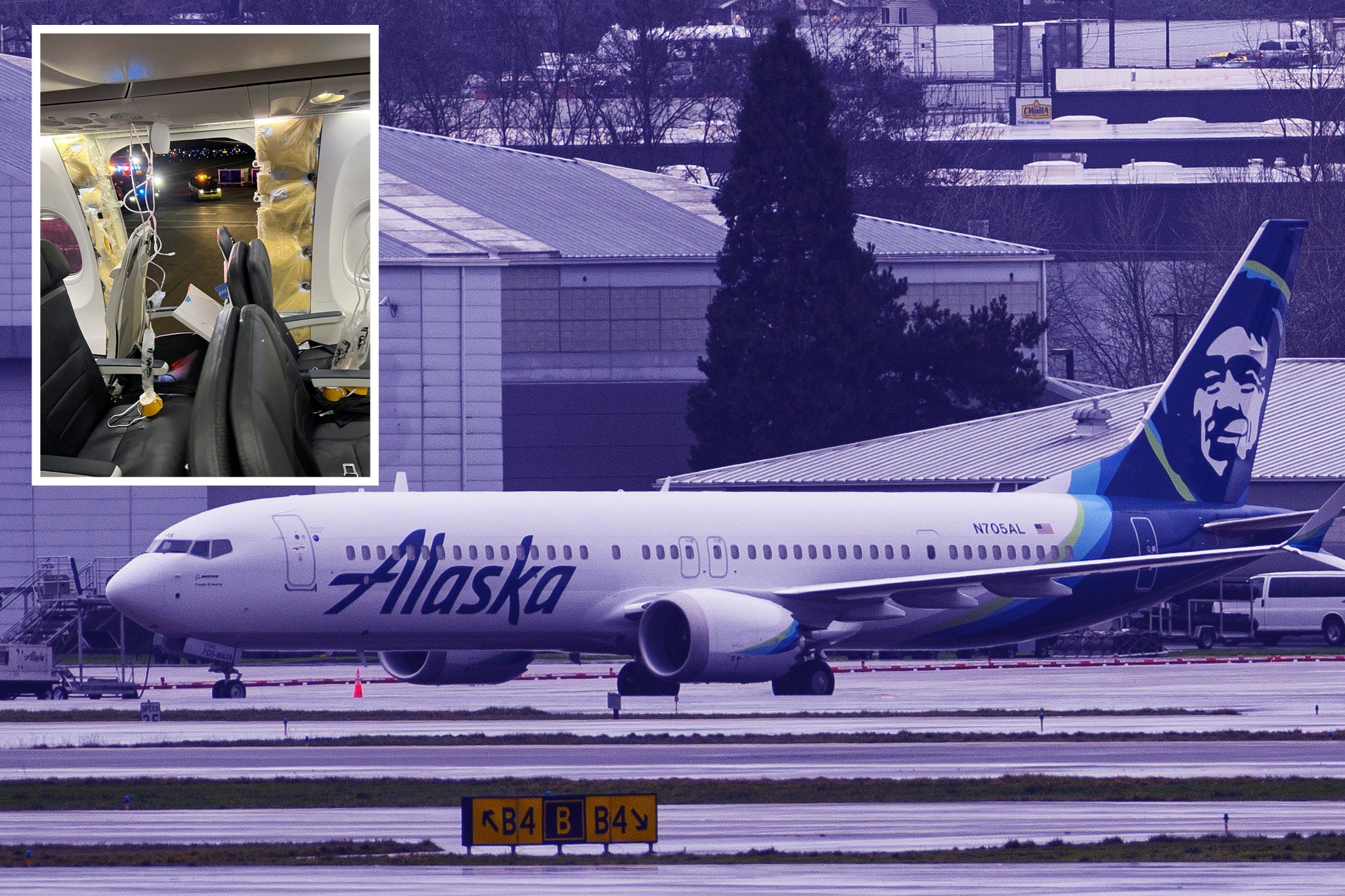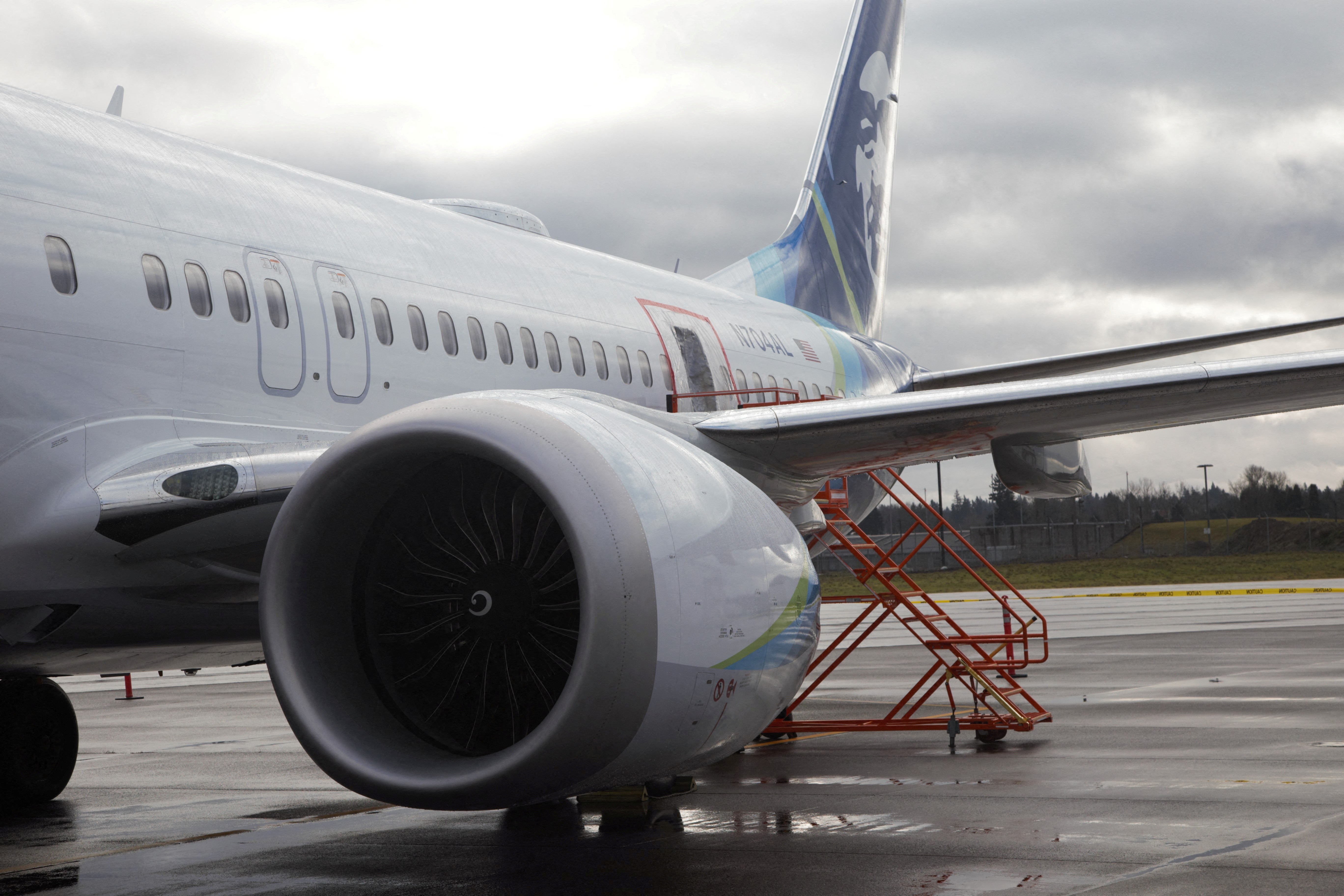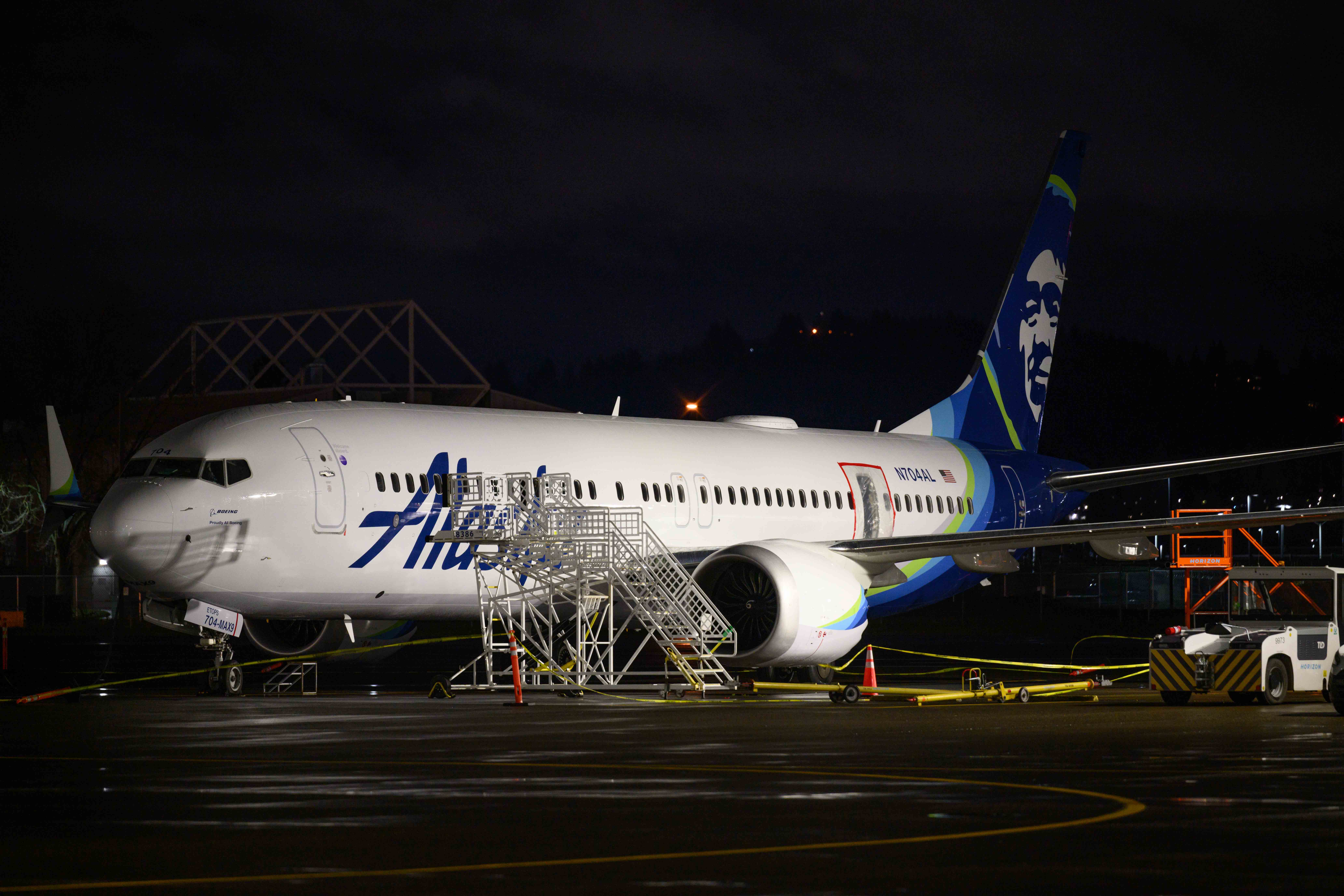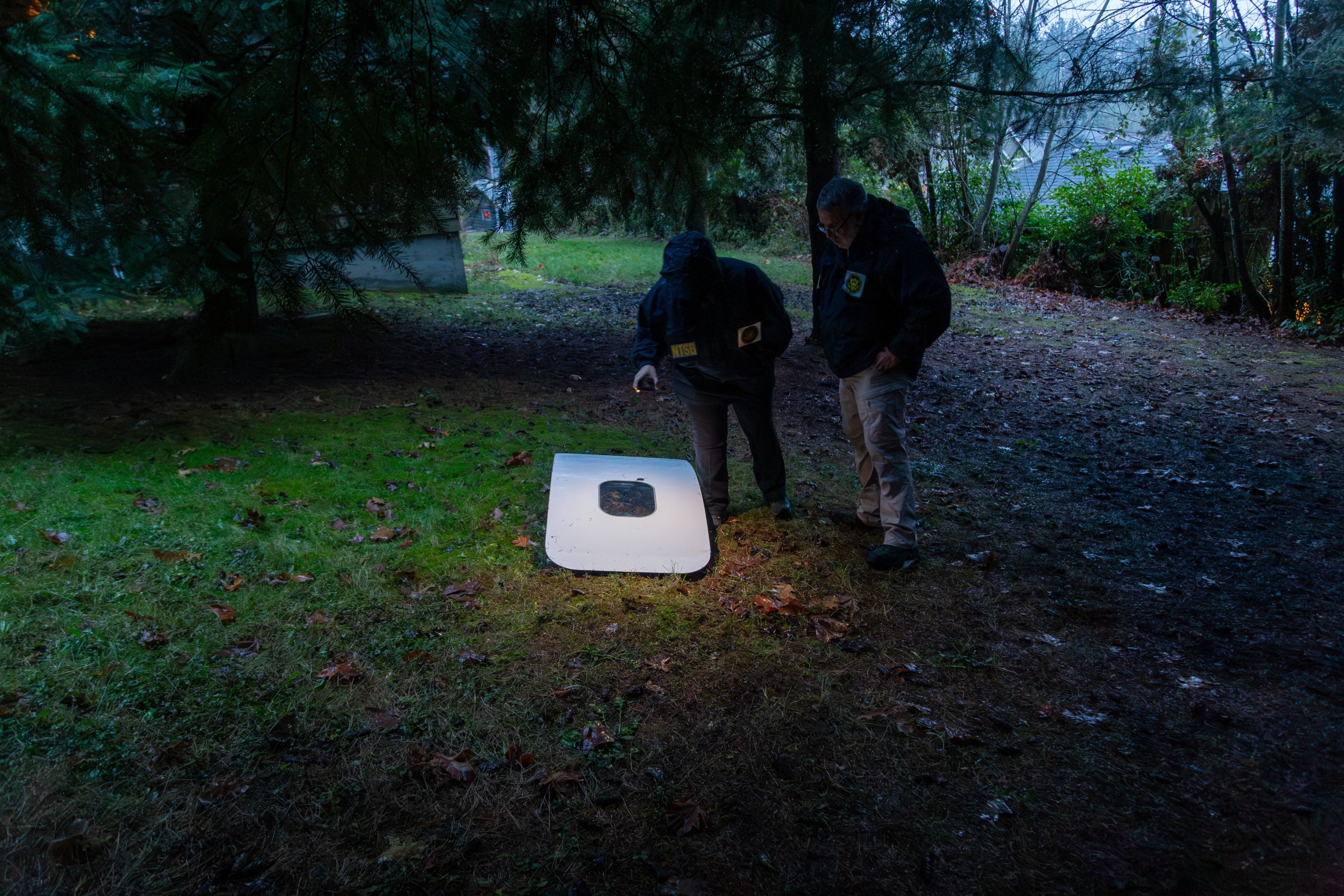How the Alaska Airlines flight will impact the future of air travel
In the short term, experts say passengers should anticipate flight cancellations, writes Michelle Del Rey


Experts say that the Alaska Airlines flight emergency is not likely to impact the air travel industry long-term but key players in the field should be looking at ways to increase safety and implement reforms moving forward.
Last Friday’s shocking incident happened when a door plug, a specific panel of the fuselage near the rear of the Boeing 737 Max 9 aircraft, blew out.
Approximately 171 people, including four minors and three babies, were on board the flight which left Portland International Airport for California around 5pm and returned after the equipment failed at 16,000 feet in the air. There were also six crew members working on the aircraft.
Several passengers sustained injuries that required medical attention, but were later cleared by medical staff, the airline announced in a statement.
In the short term, both Alaska Airlines and United Airlines, which found loose bolts on several of its models of the plane on Monday, cancelled hundreds of flights after the Federal Aviation Administration (FAA) announced that it would be grounding Boeing 737 Max 9s for inspection.
The maintenance work is expected to last anywhere from four to eight hours.

“That’ll disrupt (travel) for another three to four days,” Peter Goelz, former managing director of the National Transportation Safety Board (NTSB), said. “That’ll be it. They’ll be back in service.”
The agency has launched an investigation into the accident, which is estimated to be finished in about 18 months.
Still, what’s clear is that the incident could’ve been much worse.
“This was an extremely fortunate set of circumstances that this thing blew off at 16,000 feet and not 30,000 feet,” Ed Booth, a board-certified aviation attorney in Florida said. “Had that happened, there would have been a catastrophe.”
How the incident will financially hurt the travel industry
The attorney suspects that lawsuits will be filed against the parties involved in response to the incident, but it’s not expected that litigation would do significant financial damage to either Boeing or Spirit AeroSystems, the manufacturer that made the door plug.
“The question is how many?” he said. “These people were traumatised, physically injured, they’re going to have ear problems, PTSD, you name it.”
Just a month before the incident, a lawsuit was filed against Spirit Aerosystems alleging that the company had “sustained quality failures” in its products.
In a statement, Spirit Aerosystems said, “We are grateful the Alaska Airlines crew performed the appropriate procedures to land the airplane with all passengers and crew safe. At Spirit AeroSystems, our primary focus is the quality and product integrity of the aircraft structures we deliver.

“Spirit is a committed partner with Boeing on the 737 program, and we continue to work together with them on this matter. Spirit is following the protocols set by the regulatory authorities that guide communication in these types of circumstances and we will share further information when appropriate.”
Boeing also has expressed its regret at the deeply embarrassing incident.
“Safety is our top priority and we deeply regret the impact this event has had on our customers and their passengers. We agree with and fully support the FAA’s decision to require immediate inspections of 737-9 airplanes with the same configuration as the affected airplane,” the company said in a statement.
“In addition, a Boeing technical team is supporting the NTSB’s investigation into the Jan 5 accident. We will remain in close contact with our regulator and customers.”
At a company town hall on Tuesday, the company’s CEO Dave Calhoun said Boeing is “acknowledging our mistake” in the event and plans to move forward with 100 per cent transparency in how it reacts to the ongoing investigation.
“This stuff matters,” he told the audience, growing emotional. “Everything matters. Every detail matters.”

What a federal investigation could reveal
While conducting its investigation, the NTSB is probably going to examine the level of quality assurance for both Boeing and Spirit Aerosystems, Mr Goelz said. That means finding out if employees were completing their assigned tasks per the detailed instructions assigned to them. He predicts that the final investigation will reveal that the “quality assurance was not up to snuff” and the planes left the manufacturing floor without the bolts securely in place.
If officials discover a flaw in the plane’s design, the NTSB will make a recommendation and pass it along to the FAA and Boeing. It’ll then be up to the FAA to accept the recommendation and turn it into a directive.
No matter the probe’s findings, Mr Goelz said he believes the companies will strengthen their manufacturing and check processes as a result of Friday’s flight. There have been cutbacks at both companies in their quality assurance departments, he said.
At this point, however, it’s impossible to pinpoint which company was responsible for the error.

During a news conference on Monday, National Transportation Safety Board Engineer Clint Crookshank said the agency has not been able to recover the four bolts that were on the plane and has not yet determined if they were there at all.
It’s Mr Booth’s guess that someone involved in the manufacturing process forgot to put the bolts on, causing the emergency to occur. The fuselage is not a part of the plane that is inspected regularly, he said.
Boeing’s troubled past
Boeing has been at the centre of two fatal crashes in recent years. In October 2018, a faulty sensor on a Max 8 jet activated an anti-stall system that caused a plane to crash near Jakarta, Indonesia, killing all 189 people on board. The following year, another Max 8 operating under Ethiopian Airlines crashed, resulting in the deaths of 157 people.
Last week, the US Department of Justice announced it charged the aeroplane giant with fraud conspiracy regarding the 737 Max model. The company has agreed to a $2.5bn payout as a result. The money will be split into payments for beneficiaries of the deceased, a criminal monetary penalty, and compensation to airline customers.
Despite this, the company has been building planes at higher than usual rates as the demand for air travel continues to increase, experts say. The company had a goal of building 42 jets a month by December 2023. By 2025, the company is aiming to build 57 aircrafts a month.
“I think the industry is going to learn a hard lesson from this and I think the public is going to take a look at how fast they build these things,” Mr Booth said. “When you’re building them this fast, a slip up in quality control can cause something like this to happen.”
Even with all the media attention, he added that it’s unlikely that airlines would stop using their Max 9 planes.
Yet, there are changes that the aviation industry should consider making.
Potential reforms for the aeroplane industry
Jennifer Homendy, chair of the NTSB, became increasingly frustrated while speaking to reporters after the incident, describing how the cockpit voice recorder (CVR) was not preserved from the flight.
The CVR would’ve recorded all communications between the cockpit and flight crew. Officials could’ve used the recording to analyse how the crew responded to the incident and used the data to improve safety, especially about the communication issues that emerged during the accident.
Ms Homendy reported that flight attendants and the pilots were unable to effectively communicate with each other as the incident unfolded.
The CVR system resets every two hours and creates a different recording.
By the time it was checked by officials, it was too late. Ms Homendy called on the FAA to up the two-hour mark to about 25 hours.
Mr Goelz concurred and called the lack of recording time “the most outrageous issue” in aviation safety, adding that there’s no critical reason for the time bar.
Another safety tool could be the implementation of cameras in the cockpit, which could be vital in crash reconstruction.
Separately, Mr Booth said the FAA should consider having more oversight over aeroplane manufacturers.
Boeing currently can conduct internal inspections, even though the company has cut inspectors to reduce overhead costs, John Goglia, a certified mechanic who formerly served on NTSB’s board, noted.
“Without the bodies, how much can you inspect?” he said.
Meanwhile, with the world’s eyes on the Boeing 737 Max 9s, experts say that passengers shouldn’t have any concerns when it comes to boarding a flight.
“I think this is probably the safest time to ever fly,” Mr Booth said. Officials, he added, “are paying attention right now.”
Join our commenting forum
Join thought-provoking conversations, follow other Independent readers and see their replies
Comments
Bookmark popover
Removed from bookmarks